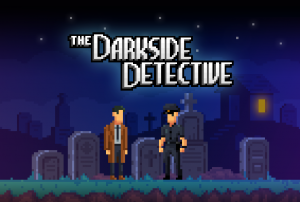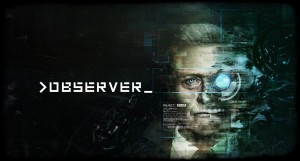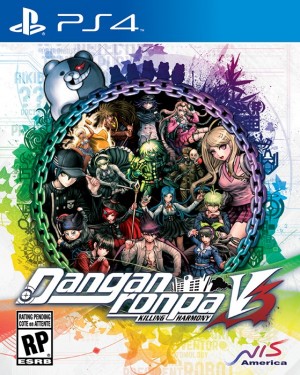Review for Alone With You

Sometimes a game’s strategic marketing efforts can be a bit misleading. Such is the case with Benjamin Rivers’ Alone With You, which boasts the tagline “A Sci-Fi Romance Adventure.” While a clear attempt to appeal to a wide demographic, such a description probably pigeonholes this interesting game too much. It is not nearly a romance so much as it is simply a story about isolation, human contact, and the power of emotional connection—all set against an effectively bleak science fiction backdrop. And it’s not really a traditional adventure, but rather a methodical third-person exploration game with very occasional puzzles.
You play as a member of a space crew in the year 2064, a character who serves as a blank slate at the time you create it. You will enter your name at the start and you can feel free to project whatever gender you prefer onto the protagonist; none is selected and your face is never seen underneath your helmet. You are part of a large terraforming mission in the outer reaches of the galaxy, an operation which goes disastrously wrong after what is referred to as the "Rift Event." When you return to the wrecked interior of the ship immediately after the event, you find you’re the only living member of the crew remaining, and your only companion is AF4B/3B, the awkwardly named Artificial Intelligence construct built into the ship. The AI’s sole purpose now, with you as the survivor, is to find a way to get you back home to Earth.
It’s not that easy, of course. There are numerous obstacles preventing a simple shuttle ride home, including problems related to communication, food sources, and engine dynamics. There’s no getting out of here unless those dilemmas can be resolved. Thankfully, your former colleagues on the expedition (a variety of skilled scientists, engineers, botanists, and other relevant experts) were hard at work on many of these issues in their respective stations down on the planet. The action takes place as you venture out to these stations, each quest taking up one day of game time, looking for the information and resources necessary for your AI to utilize in preparing the journey home.
The missions involve you, guided by the constant presence of AF4B/3B, exploring the Agro Domes, Comm Relay, and other related areas to gather the beneficial data required. Your character, totally bereft of backstory, appears to be little more than a colony worker bee—think Roger Wilco without the endearing clumsiness—but thankfully the AI is nearly omniscient in all relevant scientific fields, so the significance of each discovery is fully translated for you in great detail on the spot. These missions are not just about finding science-y stuff, however; each of these stations was fully populated with a cast of human beings with very human traits, for better and certainly for worse. It’s not a spoiler to say that after the Rift Event, not one of them survived, and many died in rather bleak and gruesome conditions. Besides their research, they left evidence of relationship dynamics, love, jealousy, rebellion, rage, and many consequences of acting out on these emotions.
Having no one to talk to about all this would be a bit boring (and frequently is in many other narrative exploration games), so your helpful AI has found a solution for this—each night, after that day’s mission and a brief nap, you can visit an artificial hologram of the leader of the station you just visited. Because each leader’s projected personality was drawn from their life before the Rift Event and their subsequent demise, these holograms aren't aware of the positive research developments that took place on their stations as dedicated scientists and engineers worked to the end—but they also aren't aware of how their staff felt about them or about each other, and certainly haven't processed their own deaths. These nightly conversations allow you to share the discoveries you found so that, ostensibly, the brilliant knowledge of these leaders can then tell the AI how to use them to create a safe and sustainable ride home.
More importantly than a means to safety, though, these conversations serve as human connection points. The crew leaders were just as lonely as you even when surrounded by their subordinates, and still bear the emotional scars of the difficult events that unfolded under their watch. They just need someone to talk to, and their dialogue during these lengthy discourses is extremely well written. Unfortunately that’s not a two-way street; due to the hyper-focus on your character’s neutrality, you have no real personality, and thus you don’t even get complete lines of dialogue, only a constant series of three abbreviated responses or topic choices instead. Not even allowing the protagonist to speak a full sentence is a little too extreme, and the one-sided nature of the conversations is a disservice to the obvious skill of the writer.
Events take place over three weeks, a game-week being five days. Each week's first four days follow the pattern of journey and exploration, return to headquarters, have lengthy conversation with a different crew leader. For the most part, you can do the four missions in any order, which is not a choice you should labor over since there are absolutely no story consequences for any particular sequence. The fifth day of each week is the true moment of player decision. For your off-day, the AI allows you to pick one of the four crew members to revisit for an additional extended conversation. This is clearly where the “romance” referred to in the game’s tagline is intended to fit. It is clear that you’re supposed to pick one of the leaders that you’re keen on and take every opportunity to see them (the game even has an achievement for picking the same person to meet with all three weeks).
These crew leaders, however, as nicely scripted as they may be, are not distinct enough to make such a choice very meaningful. They’re really four very light variations of the same character: once passionately driven to a fault by their expertise, now regretful and lonely and coming to grips with how painful it is to know that they hurt the people that once trusted them. Their remorse is very believable. They talk about it in detail, and you listen, and the choices you’re given to steer the conversation are fairly meaningless in terms of actually impacting direction. There is really no discernable way to express significant disapproval or make these discussions go poorly. It could have added some real emotional heft to offer a little more potential negativity in these sequences. You’ll also likely find, if you try to play more than a couple game days in one sitting, that the day/night sequence is very repetitive and, unless you’re interested in the science tidbits being doled out constantly, there’s not a lot of interesting variation.
The interface features third-person direct control, most easily played with a gamepad (though the keyboard is also allowed; the mouse is not used), with a single button to look/interact and a separate button to activate your portable scanner, which gathers data that your AI companion then translates into helpful backstory. This is a function that could have easily been collapsed into the interact button, but the separate scanner button (mapped to the right trigger on gamepads) allows for a more genuine feeling of using a device. The game could certainly use an easier way to detect hotspots, rather than making you walk by everything to know which items can be interacted with or scanned.
As you explore each area, the extent of Alone With You’s puzzles is the gathering of clue words or codes and inputting them into secured doors to gain access. There are a couple decent challenges where you really need to pay attention to the information gathered and put facts into the correct order, but in general these puzzles are very straightforward as long as you look at everything, and at their worst they feel terribly tacked-on—in one late mission, you have to locate multiple four-digit keycodes, but the codes are just random numbers shoved into an observed item, with no logical connection why that sequence would be used to secure a door. Each game day, including mission and conversation, will take around a half-hour, so you should expect 6-7 hours to complete the entire game—though the repetitious nature of the missions should discourage anyone from attempting to speed-run.
The artwork has a very distinct retro vibe. Locations are impressively detailed within the context of their pixel art presentation, however, and despite a lot of very bleak events being depicted, the soft pastel hues are colorful and the game is never unpleasant to look at, though the low-res design can occasionally compound the problem with detecting scannable items. There are even cute little cutscenes such as your character climbing up a ladder into the transport, or a close-up animation of you setting your helmet on the nightstand before resting. These quick interludes feel like they came straight out of a late ‘80s arcade game and are a very nice touch. As bright and vivid as the art is, the music (which only plays during your missions, not during conversations) is a cacophonous assault of hard-techno that frequently does not resemble melody so much as a progression of aggressive industrial noises. It is often not enjoyable to listen to, but it certainly underscores the grim unease of your exploration.
The story moves very slowly, a systematic journey of exploration and information-gathering offset with developing deepening friendships. Only in the last hour is there a major plot development, as the opportunity to leave the colony begins to take shape but comes with sudden AI-induced consequences that seem to pay light homage to minimalist sci-fi classics like 2001: A Space Odyssey. There is also a major binary choice that ends the game, and the emotional build-up to that choice does make it a legitimately difficult decision. But the stone neutrality of the protagonist again has a negative impact on these moments; because your character has no real reactions to speak or display, you are only feeling the effect of these traumatic events because the AI tells you to. There’s no chance to undo your final decision either; with just a single auto-save slot, once you’ve completed the game your only option is to restart to see the other ending.
While Alone With You succeeds as an interesting science fiction story, and does generally feature strong dialogue writing for the non-player characters, its focus on exploration and dialogue over puzzles makes for a light gameplay experience and it ultimately fails to create compelling enough individual personalities among the other people involved to make the “romance” aspect truly feasible. Still, with the right expectations going in, you’ll enjoy modest adventure aspects, very good sci-fi storytelling, and an interesting rumination on isolation and how it truly feels to be alone.































